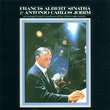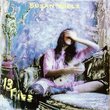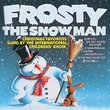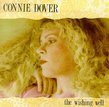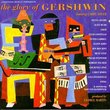| All Artists: Alexandre Desplat Title: Cheri Members Wishing: 1 Total Copies: 0 Label: Varese Sarabande Original Release Date: 1/1/2009 Re-Release Date: 6/16/2009 Album Type: Soundtrack Genres: Pop, Soundtracks Style: Number of Discs: 1 SwapaCD Credits: 1 UPC: 030206696127 |
Search - Alexandre Desplat :: Cheri
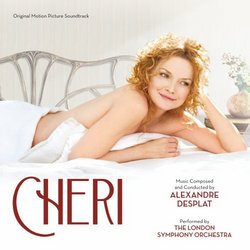 | Alexandre Desplat Cheri Genres: Pop, Soundtracks
No Description Available. Genre: Soundtracks & Scores Media Format: Compact Disk Rating: Release Date: 16-JUN-2009 |
Larger Image |
CD DetailsSynopsis
Product Description No Description Available. Genre: Soundtracks & Scores Media Format: Compact Disk Rating: Release Date: 16-JUN-2009 Similarly Requested CDs
|
CD ReviewsTypical Desplat, as lovely as ever Jon Broxton | Thousand Oaks, CA | 07/29/2009 (4 out of 5 stars) "A romantic period comedy-drama based on a novel by the popular French writer Sidonie-Gabrielle Colette and directed by Stephen Frears, Chéri is the story of an unusual romance between Léa de Lonval, an ageing courtesan in 1900s Paris, and Frederic Peloux - nicknamed `Chéri' - the 19 year old son of Léa's friend Charlotte Peloux. Despite the differences between them in age and class status, Léa teaches the eager Chéri about life, love, and sex, shattering stereotypes and upsetting the inflexible social order of the period. The film stars the luminous Michelle Pfeiffer as Léa - still as gorgeous as ever at the age of 51 - Rupert Friend as Chéri, and Kathy Bates, Felicity Jones and Frances Tomelty in supporting roles. The film also has an original score by Alexandre Desplat, whose work and stylistics would seem to fit this genre above any other. If any composer is suited to scoring a French period romance, Alexandre Desplat is. Making use of a the London Symphony Orchestra with special emphasis on Carmine Lauri's violin, James Boyd's viola and Caroline Dale's cello, Desplat's score sparkles and shimmers with the same wit and energy that Pfeiffer brings to her performance in her role. The main theme, "Chéri", is a mischievous dance which flits around the lighter parts of orchestra, pitting a set of lightly prancing ultra-high strings against playfully delicate interludes for chimes and bells, clarinets, harps, a harpsichord, and other crystalline orchestrations, that set a mood of good-natured whimsy. A lush theme in waltz-time, underpinned by an increasingly familiar electronic pulse, characterizes the lovely "The Rose Acacia", which features especially tender and longing solo performances of the three solo string instruments; the oddly engrossing duet between the cello and a twinkling glockenspiel is a highlight of the cue's second half. Much of the rest of the score unfolds from the main themes in the "Chéri" suite, both in terms of tone and in instrumental content; high strings, impeccably precise rhythms, and other instruments performing at the higher end of the register - pianos, chimes, bells, metallic percussion, fluttery woodwinds - dominate the score. Once or twice, an unusual circus-like motif, underpinned by oompah brasses, does make an appearance, as in the "The Wedding" and later in "Pleasure and Happiness", giving the score a little boost of unexpected comedy, as if underscoring the pompousness and over-formality of Parisienne society, and the `circus' of public social niceties masking the rampant sexuality behind closed doors. The twinkly-eyed playfulness reappears in "First Kiss", clearly the come-hither seduction of an older woman leading on her teenaged quarry; "Flower Tunnel" features a piano solo of wonderful dexterity and clarity that gradually gives way to a gorgeous, romantic viola theme, again in waltz-time. "To Biarritz" is a more gregarious piece underpinned by a strident string figure that conveys a sense of movement and purpose, and eventually develops into a prominent trumpet statement, clear and powerful. "Return Home" swells into a lovely, lush duet for soothing strings and those wonderfully elegant dancing flutes he often employs; at the other end of the scale, "Léa's Solitude" features moody, introspective violin solos, a poignant piano melody, and bittersweet harp waves, clearly alluding the loss and loneliness felt by Pfeiffer's character at the low point in her life. A slightly forlorn variation on the main waltz theme appears in the lovely penultimate cue, "Beautiful Handles", while the conclusive "An Old Woman" has a palpable sense of wistful resignation lightened by a twinge of tenderness, and restates the lovely waltz theme for Léa, before gradually fading to nothingness via an extended string sustain. One thing that I am beginning to notice, the more and more I listen to Desplat's music, is how much of a unique and original voice he has. Unlike other composers, who are consummate musical chameleons, Desplat's music always sounds like Desplat's music. There's no mistaking his style. He has a number of personal markers which crop up in many of his scores, and which clearly show them to be a "Desplat score". His continual use of waltz time, for example, is clearly a dead giveaway, but there is also a great deal of individuality and personality in the way he writes for woodwinds, the way he favors certain twinkling percussion instruments over others, the way he uses certain instruments in combination with others, the way he often uses electronic pulses under his orchestra to boost the bass. Chéri has much in common with scores like Birth, The Luzhin Defence, and some of his earlier French-language features, and as such will clearly appeal greatly to admirers of those works. As I have said before on other reviews of Desplat's works, this score is clearly not for everyone. His precise, almost metronomic pacing obviously puts some people to sleep, while the clarity of the orchestrations and attention to detail in the instrumental combinations evidently frustrates those who prefer a larger palette and a more powerful orchestral sound. I understand that; I really do. Personally, however, I find myself falling in love with the Frenchman's music more and more with each passing score, and Chéri is yet another example of why I consider Alexandre Desplat to be arguably the most exciting voice to emerge into the film music mainstream in many years." Lovely and Amazing Michael L., Harrington | Cambridge, MA USA | 09/10/2009 (4 out of 5 stars) "Alexandre Desplat's star in rising in the world of motion picture scores, and this is reason enough for that ascendancy. It's beautiful, playful, elegiac--the perfect embodiment of Colette's demi-monde and the elegant, fin-de-siecle situations of its characters. I hope it will be remembered when Oscar nominations are announced next winter, and I eagerly await more work from this composer." Solid, enjoyable score typical of Desplat's past work Nef | Urban east coast, USA | 07/13/2009 (4 out of 5 stars) "This is an enjoyable and well-executed score that, in most places, enhances the accompanying film (which is quote enjoyable in its own right). It is extremely characteristic of Alaxandre Desplat's previous movie scores. In fact, about 10 minutes into the movie, I identified the composer on the sole basis of the score---not so much the melodies or motifs as the arrangement.
The closest Desplat score to this would probably be GIRL WITH A PEARL EARRING. Both are heavy on that Desplat standby: the twinkly, sparkly, music-box (often used underneath any and every melodic motif he chooses). There are two main motifs here: the sweeping, traditional movie-score one that movie execs would probably consider to be the main theme, and a midtempo, mischievous one. I call the former Theme and the latter Pleasant Intrigue. The movie opens with the second theme, which I find to be an interesting directorial choice. Most people would probably not find Pleasant Intrigue to be a very substantial motif, however, I think the director was trying to start us off on a deliberately mischievous note--i.e. "what saucy fun these courtesans have! What amusing trouble might they get into?" This early set-up makes the progression of the movie into disturbing emotional turmoil and, ultimately, poignant reflections on life, all the more surprising and gratifying. Predictably for a movie score, the music follows suit; you will notice by my rundown below that the score progressively darkens throughout the movie. Here is a cue-by-cue rundown. It's mostly a report of the various instruments and tempos punctuated by my impressions of their overall "sonic pictures." I put a star beside my favorite cues. I hope you enjoy this score; I think it's a worthy effort that even, at some points, strays a bit from Desplat's tendencies toward predictability (still plenty of the ole' music box, though!) 1. (Cheri). A bustling, midtempo theme with stacatto strings forming the motif I call "Pleasant Intrigue" (it manages to give the impression of a bit of naughtiness that will not really hurt anyone in the long run). Then it segues into a jaunty, uptempo, circus-esque motif I call "Hi-jinks" and, finally, a third motif, a plodding, humorously "bloated" sounding interplay of brass and strings. Finishes with Pleasant Intrigue motif and trumpet solo recalling some of Thomas Newman's "Americana"-style work on the LITTLE WOMEN soundtrack. 2. (The Rose Acacia). This is what I (having seen the film) consider to be the main Theme of the movie. It is a waltz with a sweeping, strings-dominated melody that is held back from being a truly "romantic" theme by its use of minor key in some areas and the repetitive hooting of keyboard synthesizers. Towards the end of the cue, the melody is underlaid by the "sparkly," music-box type of backdrop that made me instantly identify this as a Desplat score. It is a traditionally "period film" theme that would fit in well in an AGE OF INNOCENCE (also starring Michelle Pfeifer) milieu. 3. (The Wedding). This is a hodge-podge of several different motifs. Delicate, cautious, "Tip-Toeing" opening(someone's up to something naughty/secret again!) segues into a thoughtful solo piano theme. Piano solo morphs into a repetitive but escalating five-note theme I call "Piano Tension." More Desplat sparkles underneath it all. Pleasant Intrigue makes a brief appearance. Whoa, here comes the Circus again (nice strong brass here)! Now a new motif is introduced--a steadily progressing, rather stately one I call--well, Stately Progression. Finally, the Theme returns, but with an emotive violin small ensemble carrying the melody. 4. (First Kiss). Hushed, cautious strings open up to Pleasant Intrigue, but carried by a keyboard/piano solo. *** 5. (Flower Tunnel). Bell-like piano in poignant, troubled solo (has a few echoes of the Theme about it). Now the emotive violin duet/small ensemble interpretation of the Theme (very pretty; if you liked the SCHINDLER'S LIST use of solo strings, you'll like this). Whole cue is bittersweet and makes me think of love lost and promises broken. ** 6. (To Biarritz). I call this "Troubled Flight." Stacatto, tense strings underlay a troubled-sounding violin solo and interweaving, sinuous small string ensemble. This definitely gives the impression of someone stealing away in the night...and then, just a few times, it bursts into a majestic, sweeping bit filled with soaring brass and decisive timpani that gives the impression of delicious freedom (sadly, it ends too soon and goes back into the main Troubled Flight motif). Trumpet solo over Desplat music-box is standard Desplat fare. Ends on a sweeping but very brief motive plucked from the Theme. 7. (6 Years Later). This is pretty much background/filler music. No easily discernible motifs for most of the track, just experiments with different instruments, with a simple "left hand" (piano terms) done in four. Later in the track, snatches of the various previous motifs pop up, but only briefly and uninterestingly. 8. (Return Home). --starts off with more filler, but then moves into hushed, plucked strings that stop abruptly. Into the silence comes a chiming, minor-key piano motif ("Disturbed Bells") that later blossoms into a soaring, string-heavy theme that suggests a "Blissful Idyll." 9. (Lea's Solitude). Reprise of the main Theme, in a much slower tempo, with a thoughtful, alternating interplay between strings and keyboards. Quite brief. 10. (All Goes Well With the World). I call this "Slanting Strings." Slowly slanting, sometimes dissonant strings (small ensemble). No discernible melody, just experiments in strings. All the while, tense strings play an apprehensive 2-note interval (over and over) in a manner that keeps the slanting strings above from being truly meditative. This puts me in mind of afternoon light slanting through the forest trees but squirrels running around in the underbrush (preventing us from relaxing and enjoying the quiet light). 11. (Orphans). somber, slow progress of strings, very brief. Filler. 12. (Pleasure and Happiness). Reprise of Theme, done with trumpet and string solos. Next up, a slowed-down piano reprise of the Theme. Ends on filler. 13. (Les Courtisanes). Reprise of Pleasant Intrigue (more piano here). A rueful trumpet occasionally makes itself known. 14. (Beautiful Handles). dark, swirling, minor strings-opening. Then, like a lost lamb in a dark clearing, a wistful woodwind solo, soon to be joined by a dainty music-box. Ends with Slanting Strings that are made less harried due to the gentle, tinkling piano. **15. (An Old Woman). Synthesizer keyboard opens up with simple, muted chords. Enter a fluid, elegant violin solo then echoed by a flute solo. A delicate harp just barely skirts about the edge of moody strings. Then the Theme waltz picks up, a bit slower and more subdued then in its original form. Suddenly, powerful brass kicks into the Theme, enriching but also burdening it somewhat, giving it a sense of finality (fitting for the corresponding action in the movie). Strings finish us off with a sustained unison note that leaves us with an emotional question mark of sorts." |

 Track Listings (15) - Disc #1
Track Listings (15) - Disc #1



